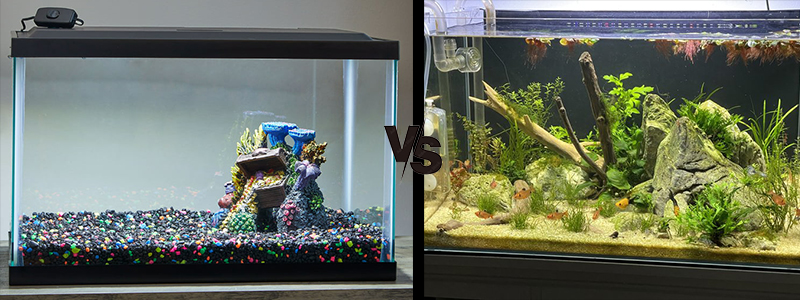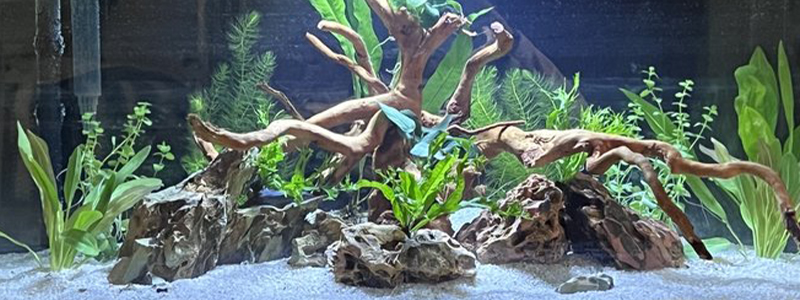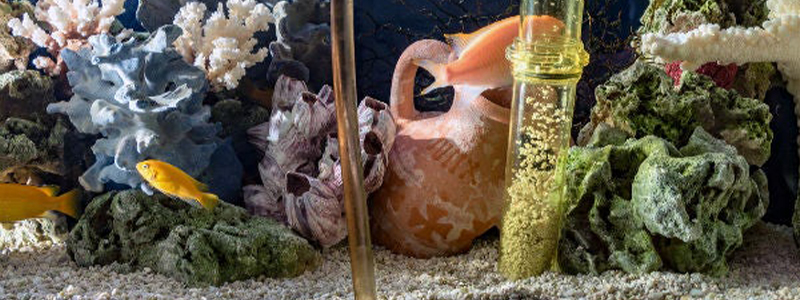As fellow aquarium enthusiasts, we are all aware of the continuous battle against algae’s unwanted growth!
Although algae are a normal component of aquarium life, fish tank algae cleaner is a must for us due to its excessive growth which can make our tanks ugly and even dangerous. It’s important to address any fuzz that appears on the glass, substrate, or decorations, whether it’s brown, green, or red.
This post will discuss practical methods for controlling algae via algae eater fish and fish tank algae cleaner. Also, keep reading till the end if you want to learn what are the causes of algae in aquarium and how to prevent algae growth in aquarium.
Disclosure: This article contains affiliate links. When you follow a link to purchase the products, I sometime earn a commission, at no additional cost to you. Read my full disclosure here
What are the Causes of Algae in Aquarium?
Algae, like other plants, depend on three essential elements to survive: nutrients, light, and water. Similar to how weeds take over a garden, algae can grow rapidly if any of these are present in excess.
Water is a must for any aquarium, but you can manage the water’s nutrient and light levels. Therefore, if you are wondering what are the causes of algae in aquarium, here is the list:
- Overusing the lights when they’re on.
- Positioning the aquarium to receive full sunlight.
- Giving the fish excessive food.
- Not routinely replacing the water.
- Preserving the high nutrient content of the water.
What are the Different Types of Algae in Aquarium?
Before, we delve into details about how to prevent algae growth in aquarium and the best algae remover for fish tanks; you must need to know the different types of algae in aquarium so that you don’t feel difficulty in recognizing them.
1. Brown Algae
Although it may not be the most attractive, brown algae—also known as silica algae or gravel algae—is safe and simple to remove. It frequently appears in brand-new tanks and eventually goes away on its own.
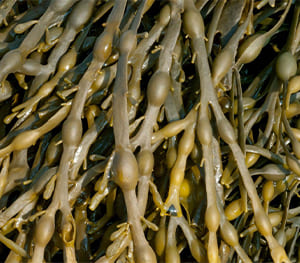
2. Cyanobacteria
Cyanobacteria or blue-green algae, is also referred to as slime or smear algae. It develops when there is an excess of phosphate and nitrate in the water in your tank. Out of all the different types of algae in aquarium, this one spreads quickly and is difficult to contain once it gets going.
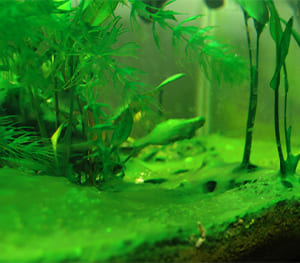
3. Green Algae
Also known as hair, thread, or spot algae, this type of algae is regarded as beneficial. Most tanks have a higher chance of encountering other different types of algae in aquarium, but as long as you take good care of your tank, green algae usually won’t become an issue.
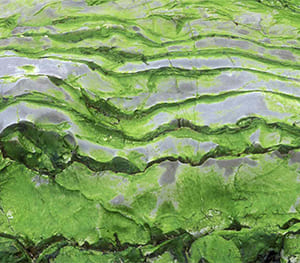
4. Algae Bloom, or Green Water
This variety makes your water green and floats in the water as opposed to growing on surfaces. It can be very difficult to remove green water algae from your tank because you can’t just wipe it off or scrape it off.
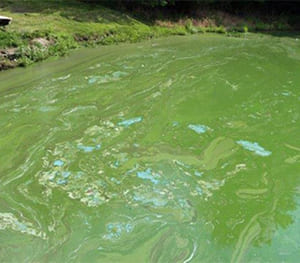
5. Red or Beard algae
The last of all different types of algae in aquarium is red or beard algae. These algae are usually attached to plants and can be very difficult to remove.
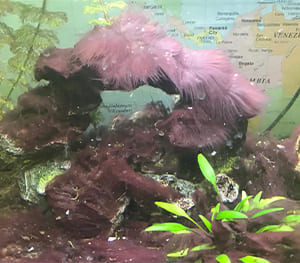
What are the Best Ways to Remove Algae?
1. Manual Algae Removal Tools: Use tools like a toothbrush, a Mag-Float Glass Cleaner, and an algae scrubber to effectively remove algae from surfaces. The non-toxic melamine foam used to make the algae scrubber is gentle and won’t damage glass or acrylic.
Fish tank algae cleaner like Mag-Float Glass cleaner removes stubborn algae with its scraper blades. For difficult-to-reach places, decorations, and specific kinds of hair algae, a toothbrush is a good tool. To ensure a thorough approach to algae maintenance, use an aquarium siphon to remove substrates covered in brown or blue-green diatom algae.
2. Assistance from Algae-Eating Animals: These animals act as an essential backup defense when it comes to fish tank algae cleaner. For nano tanks, choose algae eater fish like nerite snails, amano shrimp, or otocinclus catfish; for larger setups, think about bristlenose plecos or Siamese algae eaters.
Each algae eater fish targets a particular type of algae, offering a varied method of controlling algae that is a supplement to manual removal techniques.
3. Reduce Excess Organics: Keep your aquarium’s organic compounds under control to help fight algae. Trim dead leaves from planted tanks regularly, remove debris with a siphon, and modify fish feeding to reduce food waste. To make your aquatic ecosystem healthier, increase water flow to prevent stagnant areas. This is the ideal method of fish tank algae cleaner because blue-green algae can thrive in stagnant places.
4. Balance Lighting and Nutrients: By carefully regulating lighting and nutrient levels, you can address the underlying cause of algae overgrowth. To control the amount of light exposure, set an outlet timer for 6 to 8 hours each day and adjust it as necessary.
Check for nitrate levels, and if more than 50 parts per million, change the water. If less than 20 parts per million, apply an all-in-one fertilizer. Adjust lighting and nutrient levels gradually, pausing two to three weeks between each change to see how it affects the system and keep the balance at its best.
5. Algae Inhibitor Treatment: Choose a chemical strategy as fish tank algae cleaner by using an algae inhibitor that is safe, such as Easy Carbon. Apply it with a pipette or pump head dispenser for targeted treatment, particularly on stubborn algae patches like black beard algae (BBA).
Liquid carbon is another fish tank algae cleaner useful tool in your overall algae management strategy because it helps you strike a delicate balance between controlling algae and maintaining the health of your aquarium’s inhabitants.
Removing Algae Based on their Types
1. Black Beard Algae (BBA)
Black Beard Algae poses a challenge due to its resistant nature. Recognized by its thick, bushy clumps, often black or grey, it engulfs aquariums if unchecked.
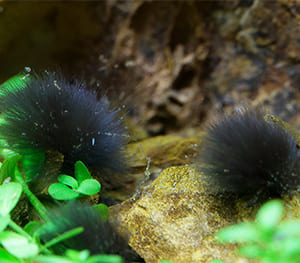
Solution: Siamese algae eaters, Florida flagfish, or amano shrimp can help control it. Moreover, chemical treatments like liquid carbon or 3% hydrogen peroxide (applied outside the tank) offer solutions. Although it is one of the best algae remover for fish tanks, you need to be cautious with plant sensitivity to treatments. Eliminating BBA takes time, around six to eight months, requiring consistent efforts.
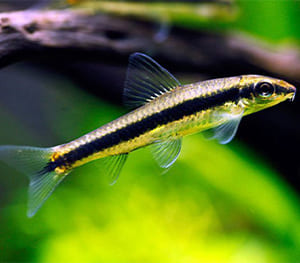
2. Hair Algae
Hair algae, staghorn algae, and related species grow quickly and resemble wet hair. Their growth is facilitated by an excess of light or an imbalance of nutrients.
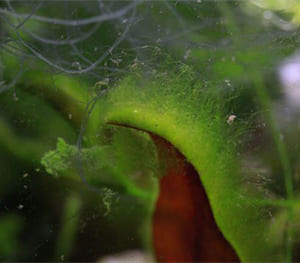
Solution: Change the timing of the lighting, improve fertilization, or lower the iron content. The algae eater fish cleanup crew consists of Florida flagfish, mollyfish, Amano shrimp, and Siamese algae eaters. Using a toothbrush to remove the algae manually helps control these types of algae that persist.
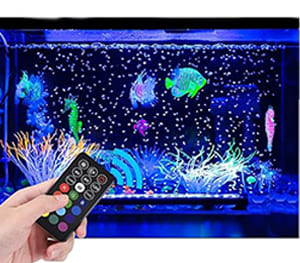
3. Green Spot Algae (GSA)
Slow-growing plants and hard green patches on walls are the signs of GSA. Excessive light or an imbalance in phosphate can be the causes.
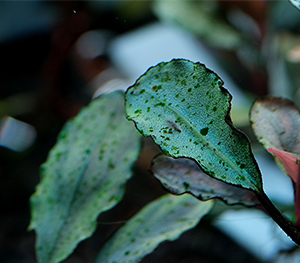
Solution: For removal, use a gift card or a razor blade. Also, algae eater fish like Nerite snails can lay visible eggs, but they are effective against GSA. GSA outbreaks can be avoided in part by careful maintenance and upkeep.
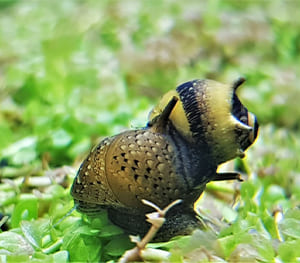
4. Brown Diatom Algae
Brown diatom algae is a dusty substance that can be easily removed using a sponge algae scrubber. Excessive phosphates and silicates are the cause of this common issue in new tanks.
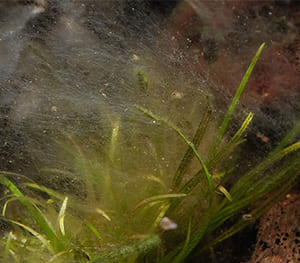
Solution: Diatom algae naturally decrease with time, plant consumption, and cleanup crew presence. It is palatable to fish such as otocinclus catfish, snails, and prawns, which helps control it.
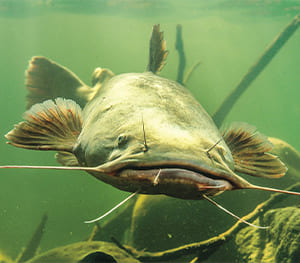
5. Blue-Green Algae
The substrate is covered in cyanobacteria called Blue-Green Algae, which gives it a unique smell. Its growth can be inhibited by better aquarium maintenance and better water circulation.
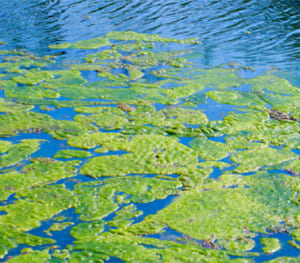
Solution: Algae eaters don’t work, so it might be necessary to implement a blackout or antibiotic therapy. For stubborn cases, repeat the treatment with antibiotics. However, this best algae remover for fish tanks can lead to BGA outbreaks but that can be avoided by keeping the water in your tank properly cycled and under ideal conditions.
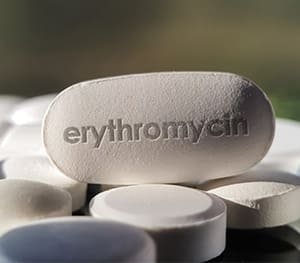
6. Green Water
The aquarium appears to be filled with pea soup due to the proliferation of single-celled phytoplankton. Its growth can be triggered by ammonia, nutrient spikes, or excessive lighting.
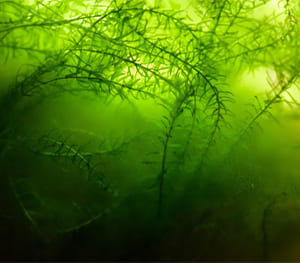
Solution: Use a blackout period to combat green water, or purchase a UV sterilizer for quick removal. Green water outbreaks can be avoided in part by doing routine maintenance and limiting feeding.
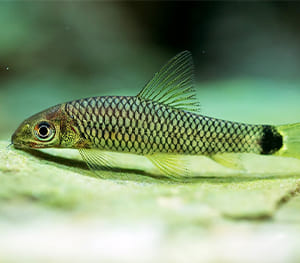
How to Prevent Algae Growth in Aquarium?
So, now that you are aware of removing different types of algae in aquarium via various methods, here we are going to present you with 4 tips on how to prevent algae growth in aquarium.
- Ideal Location: The first step in how to prevent algae growth in aquarium is to choose the ideal location that does not support algae growth. Decide where in your house would be best to put your fish tank. Reduce exposure to direct sunlight by moving it away from windows or covering it with heavy curtains. Keep your daily exposure to light between 8 and 10 hours to maintain a balanced lighting environment.
- Regular Water Changes: Every week, replace a small percentage (10%–15%) of the tank’s water. By keeping nutrient levels balanced, this routine helps avoid the buildup of compounds like phosphate and nitrate, which eventually encourage the growth of algae.
- Water Testing: Check the pH, nutrients, and minerals in the water in your fish tank regularly if you are looking for the best way to how to prevent algae growth in aquarium. Knowing these levels gives you insight into what needs to be adjusted. Chemicals to control water additives and maintain a healthy aquarium environment are available at pet stores.
- Controlled Feeding: Pay attention to how your fish eat. You may be overfeeding them if they are unable to finish their meal in three to five minutes. To avoid having too many nutrients, which encourage the growth of algae, adjust the amount.
Conclusion
To sum up, maintaining aquarium algae is essential for a healthy aquatic ecosystem. Overgrowth can harm your fish and upset the equilibrium in your tank in addition to making it look messy.
Your aquatic friends will have a clean, healthy, and aesthetically pleasing habitat if you prioritize routine cleaning, proper care, and upholding good aquarium hygiene.

